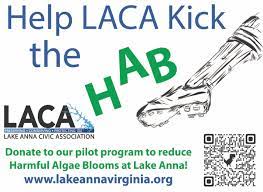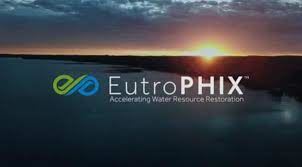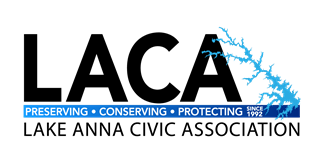By Greg Baker – September 2023
$1 Million for Lake Anna HAB Remediation
The lake had a monstrous win in the Virginia General Assembly recently!
This all started a year or more ago when the LACA board decided to start a fundraising campaign called “Kick the HAB!” We sensed a growing frustration with our membership related to the 5th year of VDH recreational or no-swim advisories for much of the upper lake.  While the various stakeholders ranging from LACA, DEQ, VDH, LAAC, the academic community and other organizations all care deeply about the lake and the no-swim advisories, most of the action was around testing Lake Anna waters. Very little was being done to mitigate or remediate the Harmful Algal Blooms. That is where this idea all started.
While the various stakeholders ranging from LACA, DEQ, VDH, LAAC, the academic community and other organizations all care deeply about the lake and the no-swim advisories, most of the action was around testing Lake Anna waters. Very little was being done to mitigate or remediate the Harmful Algal Blooms. That is where this idea all started.
The board brainstormed and came up with an idea in early 2022 to test a product called Lake Guard Oxy on several test sites on the lake. Our water quality volunteers came up with a set of experiments on the lake and made a presentation to the board for funding. Based on this outline, the board agreed to launch the Kick the HAB! Campaign. I am very proud that the board members themselves reached deep and made significant contributions to this effort. Based on this enthusiasm and our members (and non-members) donations, we blasted through our $110,000 target and raised close to $150,000! This was a first for LACA and showed that our community really cares about this issue.
In the course of the experiments using Lake Guard Oxy, we found that the product works. However, we also found that for it to be effective, we would need to apply the product far earlier in the growing season and far more often than we previously assumed. With that in mind, we scaled back our experiments late in the summer to preserve the product and to save some money. If you are interested, please visit our website to learn more about the experiments and their results. One of the conclusions from the experiment is that to fight HABs on the lake will be expensive.
Last fall, given our financial savings on cutting back our experiments and the community’s overwhelming support we had a decision to make. What to do with the excess funds from the Kick the HAB campaign. An innovative idea was brought forward to approach the Governor and the General Assembly to request funding to remediate HAB on the lake. To do this, we approached Hunton Williams in Richmond. Hunton is a local law firm that has a government affairs department and was willing to help. Hunton’s proposal was to attempt to get the funding in the governor’s budget and if that failed to ask our local representatives to include funding in a budget amendment. Because LACA is a nonprofit with a very skinny annual budget, we were not sure that we would be able to afford an impressive firm like Hunton. Fortunately, they were willing to work at greatly discounted price and we struck a deal (with the LACA board’s approval) at roughly a 75% discount from their normal pricing.
As Hunton started their efforts, we immediately hit a setback. We were too late to be included in the governor’s version of the budget. We were warned that this could be the case. Undeterred, we pressed on. We have some terrific local legislators that were willing to help us in this effort. Senator Peake led the charge on the senate side and Senators Reeves and Stuart signed on as co-patrons. On the house side, Delegate Wyatt was the chief patron and although others were not listed as co-patrons, I know that we had significant support from both Delegate McGuire and Delegate Fowler (and others as well). You can read the budget amendment from the house here and the amendment from the senate here.
The only bad news in the original budget amendments, there was $1 million in the house version of the amendment and $500 thousand in the senate version. We certainly were hoping for $1 million for Lake Anna.
Then the really bad news hit. Our Virginia legislators could not agree on a budget. I was very disappointed and felt that we had let the Lake Anna community down by investing your contributions in an effort that might not pay off for the lake.
Our friends at Hunton never lost hope and told us that it does not benefit anyone, Republican or Democrat to not come to an agreement eventually. They were ultimately correct! Just recently, as you all saw in the press, the governor called a special session to work out the budget and an agreement was made which included the original $1million in funding for mitigation of HAB at Lake Anna.
Our entire board is humbled and proud of this effort and glad our local legislators got the job done!
EutroPHIX and Phosphorus Remediation
What is the next step in our HAB efforts at Lake Anna?
LACA hosted a special board meeting on August 17th to hear a presentation from EutroPHIX on how we might make a meaningful reduction in Phosphorus in the Lake. Two members of the Lake Anna Advisory Committee attended the meeting as well as a member of Congressman Good’s staff.

You may see the minutes from this meeting here along with the marketing material provided by EutroPHIX.
One of the most compelling informational nuggets from this meeting was the following: Since the passage of the Clean Water Act in 1972, not a single water body has been cleaned though watershed restoration.
Fencing agriculture out of our streams, improving our septic systems, instituting best practices for homeowners and other watershed restoration projects certainly help, but do not reverse the impairments in our lakes. We found this statement disturbing and fascinating all at the same time. To confirm, we asked a renowned HAB expert, Dr. David Schmale from Virginia Tech and he confirmed that he is unaware of any academic or scientific paper that points to a success using exclusively watershed restoration efforts.
In other words, we need to continue our efforts to improve practices in our watershed, but that is NOT GOING TO FIX OUR HAB PROBLEM AT LAKE ANNA! We need to take action using remediation and mitigation techniques. This is where a firm like EutroPHIX could come into play.
EutroPHIX explained that a budget to remediate Phosphorus on Lake Anna would be approximately $10 million over three years to aggressively address the Phosphorus problem on the lake. We would then need approximately another $1.4 million a year after that for at least another decade to address the Phosphorus that enters the lake from the watershed.
EutroPHIX has been successful in working with the Federal government to receive funding for their efforts. The LACA board has agreed to work towards raising funds to neutralize our Phosphorus problem on Lake Anna and we are hopeful that EutroPHIX could be part of the long-term solution. LACA is committed towards this goal, but we have not committed to working with EutroPHIX exclusively.
We are meeting with Hunton Williams to come up with a plan for the future on how we might attack the funding issues needed to solve the HAB problem at Lake Anna. We are working to better understand the overall cost of remediation and mitigation and the $1 million from the state is a great start, but it is only the beginning. What we can tell you is that our local county budgets do not have the money necessary to apply to this problem and rest assured that Dominion Energy is not going to spend this type of money either. (I bring this up, because I will often hear comments that the county or Dominion Energy should come to the table and fix our problem. Rest assured; it is a much bigger problem than we can solve locally.)
As we move into 2024, we will be considering fund raising efforts to work towards this outcome. We have realized that our fundraising is not going to fix our HAB problems, and we hope that the community will continue supporting our efforts albeit to work to a governmental solution of the problem.
2023 Annual Meeting
At the end of July LACA hosted our annual meeting at Dominion Energy’s Visitor Center. It was well attended with over 100 members joining us in person and more that joined via Zoom.
I might be biased, but I believe it was one of the best annual meetings in LACA’s history. If you were unable to attend, I would encourage you to watch the Zoom video of the meeting. You may access the video here.
A big thanks to our guest speakers from Virginia Department of Environmental Quality, Sarah Sivers and Tish Robertson. You can fast forward to approximately the nine-minute mark of the above video if you would like to see their presentation.
greg.baker@lakeannavirginia.org
